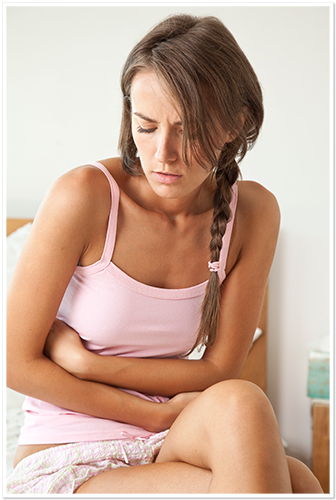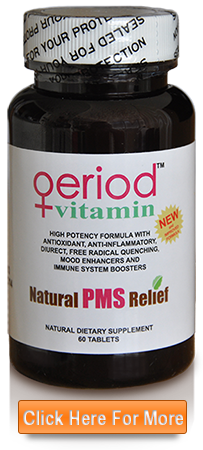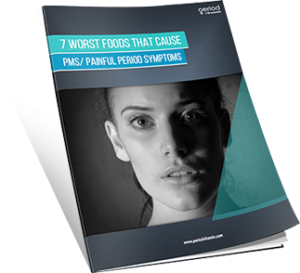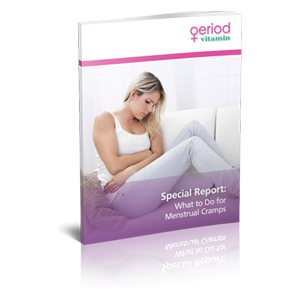 Everyone is always talking about Premenstrual Syndrome but what is it called if you have the same type of symptoms AFTER your period?
Everyone is always talking about Premenstrual Syndrome but what is it called if you have the same type of symptoms AFTER your period?
Is it possible or can you have post menstrual cramps? When causes cramps after your period ends? Are period cramps during menstruation the same thing as period cramps a few days post ovulation?
If you’re asking all these questions, you are definitely a thinker. Only a very small percentage of women have ever thought of Post Menstrual Cramps; most only know of Premenstrual Cramps.
The big thing is to solve the post menstrual cramps and do it naturally. If you start taking prescription medications, you run the risk of developing all types of side effects. Side effects don’t favor the young, so believing that you are almost invincible against medication side effects and that side effects only happen to older people will only cause you trouble down the road while you’re taking them.
You have to start learning how to solve your health issues naturally, and the younger you are when you start, the easier it will get as you get older. Also, you will be a blessing to many people along the way. The thing that most people seem to never consider is that taking a medication damages the mitochondria of the cell, in a high percentage of medications.
The more damage you do to your mitochondria, the less energy you’ll have in your life. And no one wants to be around someone who is fatigued all the time! You’re in the prime of your life so grab all the health you can now!
Natural remedies don’t damage your mitochondria and they don’t cause side effects. Natural remedies teach you to work with your body and do it in the convenience of your home.
Post menstrual cramps are telling you that something is missing in your body. It could be a vitamin or mineral or it could be phytonutrients, nutrients from plants that aren’t vitamins or minerals. The American diet is low in phytonutrients, so it’s not far-fetched to think this might apply to you. Since Big Farming took over and kicked out small farmers from the agricultural scene, changes happened in the food supply. Farmers only grow one crop – called a mono-crop – and by doing this, you are then limited in the phytonutrients from only that crop.
Using herbals is a way to put back some of those phytonutrients into your diet. That’s why you’ll see them listed here in 4 remedies for post menstrual cramps. Ready for the list of how to relieve these cramps?
1. Chamomile Tea
Chamomile tea relaxes you, and can relax those cramps you get after your period has already ended.
2. Horsetail Grass Tea or Capsules
Horsetail grass herb is a known source of usable calcium in the body. Making it into tea could ease your cramps.
3. Calcium and magnesium liquid supplement
You don’t have to look hard to find nutritional supplements that are in liquid form. There are several brands of calcium and magnesium together in a liquid supplement. What you’re looking for is one that is balanced with 500 mg calcium, 250 mg magnesium, and 250 mg phosphorus. The supplement may also have some vitamin D3 in it. Read the label, but most companies have a serving size of one tablespoon that will provide the required amount. You could take it up to twice daily
 Calcium by itself is often used as a supplement for post menstrual cramps. Calcium by itself, though, could cause constipation. If this happens in you, add the magnesium to it (see below). Your dosage of calcium is 1000 to 1200 mg per day.
Calcium by itself is often used as a supplement for post menstrual cramps. Calcium by itself, though, could cause constipation. If this happens in you, add the magnesium to it (see below). Your dosage of calcium is 1000 to 1200 mg per day.
Magnesium by itself may be used a supplement for post menstrual cramps. It won’t cause constipation – but may cause loose stools. Don’t be afraid of it though because the chances are good that you could stand to lose some of those old meals in the intestinal tract that have been around for a while. The dosage for magnesium is 400 to 500 mg extra per day.
When trying to determine your own nutritional needs, remember that the best advice is to have a qualified nutritionist determine them for you. Everyone’s body is different and has different needs at different times of life.
4. Period vitamin
A period vitamin is the easiest way to try to get your nutritional needs correct. It contains vitamins and minerals as well as herbs that can help you get the nutritional needs met that are needed during your period. The herbs contain extra phytonutrients so you can boost up your level of these important nutrients in the diet. Some of the phytonutrients include carotenoids, flavonoids, and polyphenols. A period vitamin is usually only taken once daily.



